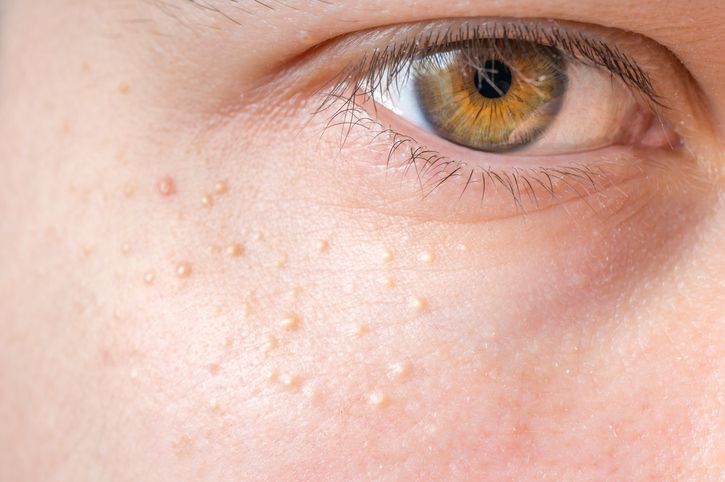- Home
- Trend
- Weight Loss Strategies
- Acne Tips
- Hair Health Information
- Blemish Removal Tips
- Acne Scar Removal Tips
- Muscle Building Techniques
- Intimate Care Tips
- Postpartum Intimate Care
- Eye Bags Wiki
- Tips for Face Slimming
- Secret of Permanent Hair Removal
- Breast Enlargement Tips
- Cure to Snoring
- Marionette Lines
- Skin-Tightening Secrets
For anyone struggling with hair loss, hair transplant surgery is likely a familiar option. Even if not everyone ends up undergoing a transplant, many have considered it once they notice their hair loss worsening. These days, it's not just people with hair loss problems who turn to hair transplants—those who want fuller hairlines or a more youthful appearance also seek this solution. While hair transplants aren't the cheapest method for restoring hair, their effectiveness makes them a popular choice despite potential risks of failure or side effects. More and more women are also turning to transplants. If you're interested in learning more about the process, keep reading!
1. How Does a Hair Transplant Work?

The principle behind hair transplants is straightforward: transplant healthy hair follicles from one area of the scalp to areas affected by hair loss. These transplanted follicles grow new, healthy hair, helping to restore a fuller appearance.
Hair transplants are especially suitable for those experiencing androgenetic alopecia (pattern baldness), which is triggered by DHT (dihydrotestosterone), a hormone that attacks follicles carrying the hair loss gene—usually located in the hairline and crown areas. Meanwhile, follicles at the back of the head (the occipital region) are typically unaffected, making them ideal donor sites. The transplanted follicles are genetically resistant to DHT, allowing them to grow successfully even in previously thinning areas.
2. The 3 Main Steps of Hair Transplant Surgery

Although hair transplant surgery might seem like simply "moving hair," the actual process involves three detailed steps:
Step 1: Harvesting Hair Follicles
This involves extracting healthy and sufficient follicles from the donor area, usually the back of the scalp. Care must be taken to avoid damaging the follicles during this step, as it directly affects the success of the next stages.
Hair Harvesting Techniques: FUT vs. FUE vs. DHI vs. ARTAS
There are four major methods for extracting hair follicles:
• FUT (Follicular Unit Transplantation): An older technique where a strip of scalp is removed and follicles are extracted from it. This can leave a noticeable linear scar.
• FUE (Follicular Unit Extraction): A more modern method that extracts individual follicles using a punch tool, reducing visible scarring.
• DHI (Direct Hair Implantation): Uses a specialized implanter tool to extract and implant follicles directly, offering higher precision and less damage to surrounding scalp tissue. It also allows body hair to be used as donor hair.
• ARTAS Robotic System: Uses imaging technology and automation to identify, extract, and implant follicles. It reduces reliance on the surgeon’s manual skill and increases consistency in results.
Step 2: Preparing Follicles
After extraction, technicians separate and clean the follicles, removing excess tissue and discarding damaged ones. Time is of the essence, as follicles lose viability the longer they are out of the body.
Step 3: Implanting Follicles
Surgeons then implant the follicles into the balding area, carefully designing the hairline and spacing for a natural look. Density, direction, and spacing are crucial to ensure healthy regrowth and aesthetic success.
免費體驗
F8 Hair Regrowth Treatment
1 Minute Self-Registration
Date should not be before minimal date
3. Who’s a Good Candidate for Hair Transplant Surgery?
Hair transplants offer long-term results, making them appealing. However, not everyone is a suitable candidate. You’ll need to undergo assessment and meet several conditions:
• You have enough healthy donor follicles
Your scalp must still contain viable, DHT-resistant follicles that can be harvested for transplant.
• You have localized or pattern hair loss
Hair transplants are most effective for receding hairlines, crown thinning, or other forms of partial hair loss, as these still leave viable donor areas intact.
• You’ve had limited success with other treatments
If topical treatments, serums, or hair regrowth medications haven’t worked, a hair transplant may be the next viable solution.
4. When Is Hair Transplant Surgery Not Suitable?
Certain factors can rule you out as a candidate:
• You have diffuse hair loss across the entire scalp
If the whole scalp is thinning, there may not be enough healthy follicles left for transplant.
• You lack enough donor follicles
Without sufficient healthy follicles, the surgery will not deliver meaningful results.
• You have a keloid-prone (scarring) skin type
Even tiny wounds from modern techniques can cause raised scars (keloids) in sensitive individuals, affecting cosmetic outcomes.
• Your hair loss isn’t genetic (non-primary alopecia)
Hair loss due to chemotherapy, medication, or underlying illness may not respond to transplants. The issue could recur even after the procedure.
5. What to Consider Before Getting a Hair Transplant
Beyond physical suitability, here are key factors to weigh before committing:
• Age and family history
Genetically prone individuals may continue to lose hair after the transplant, so medications may still be necessary to manage progression.
• Response to hair regrowth medication
Doctors often recommend trying hair growth treatments first. If these work, it's a good sign you may benefit from a transplant and can support post-op regrowth.
• Expectations
Hair regrowth takes time—usually 12 to 18 months. Results vary, and there's a risk of infection, folliculitis, or even failed transplants.
免費體驗
F8 Hair Regrowth Treatment
1 Minute Self-Registration
Date should not be before minimal date
6. How to Choose a Hair Transplant Clinic? Focus on These 2 Points
If you’ve decided to go ahead, here’s what to prioritize when choosing a provider:
• Experience of the surgeon
Make sure the surgeon is not only licensed but has a solid portfolio. Aesthetic sense matters—natural density, hairline shaping, and directional flow all affect the result.
• Pricing transparency
Hair transplants in Hong Kong vary widely in price. Understand the billing method—some clinics charge by number of follicles, others by grafts or area. More grafts generally equal higher cost.
7. What to Expect After a Hair Transplant
Post-op recovery involves several stages and possible side effects:
• Bleeding
Some bleeding is normal, especially with FUT due to the larger wound. FUE may cause pinpoint bleeding.
• Shedding phase
Transplanted hairs often fall out before regrowth. This is normal—new hairs grow after a “resting” phase.
• Fine hair regrowth (vellus hair)
Initially, soft, light-colored hair grows in. Over time, it thickens and darkens into terminal hair.
• Visible results in 12–18 months
Full results usually become evident after 1 to 1.5 years, once follicles stabilize and grow mature hairs.
8. Can Hair Transplants Fail?
Yes. While generally effective, failure is possible and can cause:
Scarring
All techniques leave some scarring. FUT leaves the most noticeable, but even FUE may scar if not done properly.
Folliculitis (inflamed follicles)
Poor post-op care or infection can trigger folliculitis, affecting hair regrowth.
Unsatisfactory results
Sparse or unnatural growth, odd hair direction, or uneven density can make the transplant look fake.
Need for repeat procedures
You only have a limited supply of donor follicles. If you need a second transplant, you may not have enough grafts left—and transplanted follicles can also be affected by DHT later.
免費體驗
F8 Hair Regrowth Treatment
1 Minute Self-Registration
Date should not be before minimal date
9. A Non-Invasive Alternative: Low-Level Laser Hair Therapy (LLLT)
If surgery isn’t for you, don't worry—non-surgical options exist.
Perfect Medical’s F8 Hair Regrowth Treatment uses 650nm LLLT to activate follicle stem cells and dermal papilla cells, helping stimulate natural regrowth.
This pain-free, non-invasive therapy rebuilds scalp health, improves blood circulation, and encourages stronger, thicker hair in a short time.
Looking for visible results without pain or scarring? Try the F8 Laser Hair Regrowth Treatment to kickstart your hair revival journey!
Try it Today: Perfect Medical F8 Hair Regrowth Treatment免費體驗
F8 Hair Regrowth Treatment
1 Minute Self-Registration
Date should not be before minimal date
FAQ

How does a hair transplant work?
Healthy follicles are relocated to balding areas, where they grow new hair. Usually, follicles from the back of the head are used, as they’re resistant to hair loss.
What are the types of transplant techniques?
FUT (strip method), FUE (individual extraction), DHI (direct implantation), and ARTAS (robot-assisted).
What are the expected results after transplant?
After an initial shedding phase, new hair starts as soft, fine strands and eventually thickens. Final results appear around 12–18 months post-surgery.
Is everyone suitable for a hair transplant?
No. Factors like donor follicle supply, scalp health, scarring tendencies, and cause of hair loss must be assessed.
What happens if a transplant fails?
You might experience poor hair growth, scarring, inflammation, or unnatural hair patterns. In some cases, a second transplant may be needed—but viable donor hair is limited.









